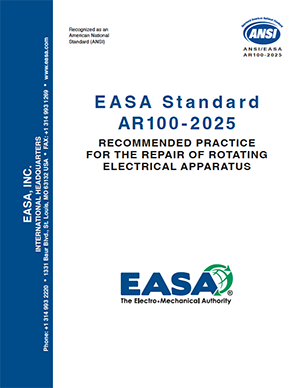
Recommended Practice for the Repair of Rotating Electrical Apparatus
This is a must-have guide to the repair of rotating electrical machines. Its purpose is to establish recommended practices in each step of the rotating electrical apparatus rewinding and rebuilding processes.
DOWNLOAD - ENGLISH
